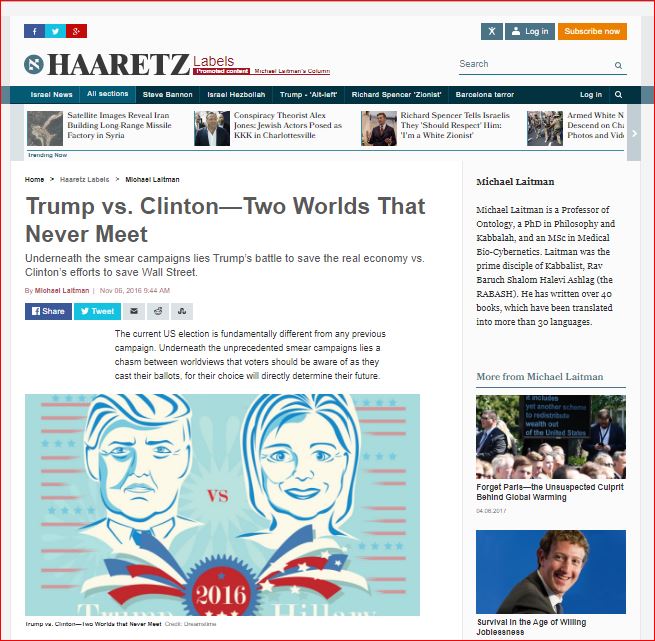Underneath the smear campaigns lies Trump’s battle to save the real economy vs. Clinton’s efforts to save Wall Street.
The current US election is fundamentally different from any previous campaign. Underneath the unprecedented smear campaigns lies a chasm between worldviews that voters should be aware of as they cast their ballots, for their choice will directly determine their future.
In this election, the two candidates do not represent two variations of the same economic thinking, but rather two fundamentally different worldviews. Donald Trump plans to rejuvenate the real economy, which produces goods and services, though it will undoubtedly come at the expense of Wall Street banks. Hillary Clinton, on the other hand, plans to bail out the banks at the expense of the real economy and the average Jane and Joe. This is why the clash between the two candidates is so heated and fundamentally irreconcilable.
To understand the candidates’ different perspectives, we need to understand the impact of the 2008 global crisis on US economy. The 1944 Bretton Woods Conference established a new economic model that bound all foreign currencies to the US dollar. The fixation of currency rates allowed the US government to print more and more dollars without the threat of devaluation. As long as global trade continued to grow, printing more dollars was economically justified since the money was needed in order to maintain the expanding commerce. Having more dollars in the global system, while maintaining the strength of the currency made America stronger, and American citizens, whose savings were all in dollars, increasingly well off. These were the heydays of the American Dream era.
But in 2008, the world plunged into an economic crisis from which it has not recovered. As global trade plummeted, printing money was no longer supported by growth. The government tried to revitalize the economy by reducing interest rates and forced insertion of new money, known as monetary expansion, or in its other name: printing even more money. Yet, this resulted in an enormous increase in the national debt.
In 2014, seeing that growth was sluggish despite the printing, and debt was spiraling out of control, the government began to cut down printing in order to slow down the increase of debt. Consequently, the major banks, which are now backing Clinton, began to choke financially. The banks know that if they want to release the chokehold, they must place “one of their own” in the White House, who will resume the printing of dollars. Hillary Clinton, whose campaign relies heavily on Wall Street finances, is completely indebted to the banks and will therefore do whatever they say. This is why Wall Street is supporting her so passionately.
Donald Trump, on the other hand, is Wall Street’s worst nightmare. For him, the US national interest is the top priority. Trump is putting the real economy ahead of Wall Street and regards economic recovery and reducing national debt as his primary goals. (Ironically, Sanders’ economic view is more in line with that of Donald Trump than with that of Hillary Clinton.) Trump will undoubtedly raise interest rates, making loans more expensive and less affordable to most people. As a result, the banks—whose main source of revenue is people’s debt—will choke even more and finally collapse. However, this will save the US economy.
In other words, Clinton plans to bail out the banks at the expense of the US economy and US citizens. Trump, on the other hand, plans to rescue the US economy at the expense of the banks. Moreover, implementing Trump’s plans will eliminate the power of the elite group of bankers and financiers who are supporting Clinton. Since they thrive on monetary manipulations, without a constant flow of new money, their sources will dry up and the drought will ruin them.
In short, Clinton’s plans threaten the real economy, the part that actually produces goods and services, and which Trump is trying to revitalize. This makes the conflict between Clinton and Trump irreconcilable.
In order for the US economy to recover, the US government will eventually have to revive the real economy. Trump is already trying to achieve this because he knows that it’s only possible to live on financial wizardry for so long. At some point, the government will have to adopt Trump’s agenda.
The longer the government stalls, the harder the inevitable shift will be on US citizens. This is why in this election, the voters will elect not only a candidate, but also an economic path that will determine their personal economic future, the economic future of the country, and of the world.
Featured in Haaretz
